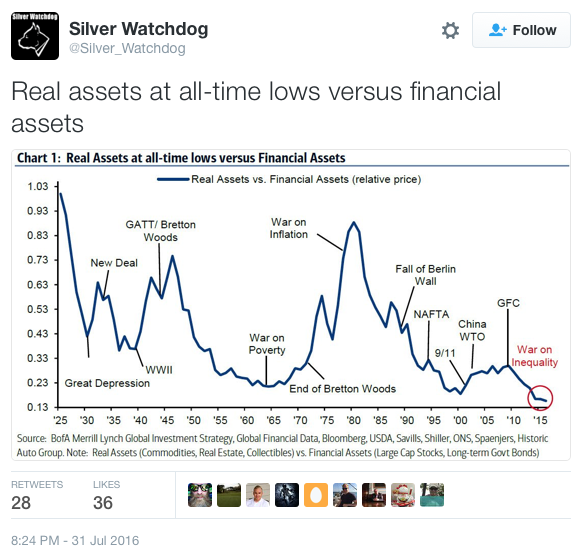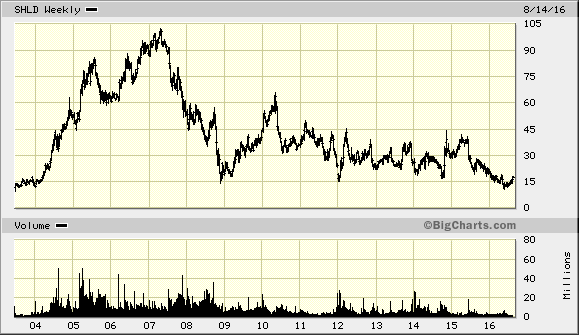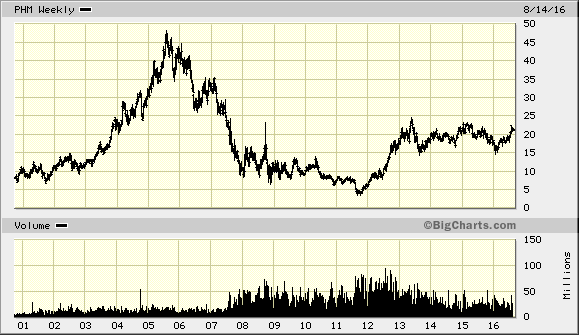Is taking investment advice from Michael Mouboussin Interview similar to taking health and fitness advice from the gentleman above? More here: http://www.michaelmauboussin.com/
Question: Your broker offers you a 10-year bond with a coupon yield (annual interest payment / face value) of 3.0%, and a current yield (annual interest payment / current price) of 2.3%. Assume zero probability of default. Comparing this opportunity with the 1.5% yield-to-maturity available on 10-year Treasury bonds, would you prefer the bond “yielding” 2.3%? What is your return?
—
What is your return? The readers who commented below are more accurate in their analysis, but let’s pretend to keep things simple:
If you chose the 2.3% bond anyway, you’ve joined the company of countless other investors who are making effectively the same mistake as they reach for yield across every financial asset. In order for a 10-year 3% coupon bond to provide a 2.3% current yield, one must pay $130 today in return for the following set of future cash flows: $3 a year for 10 years, plus $100 at the end. Paying $130 today in return for $130 in future cash flows, buyers of that bond will inadvertently discover that they’ve locked in a total return of zero. Of course, their real return incorporating inflation is negative. Who likes that deal? Yet many “professionals” are choosing that for their clients. Better to burn your money in a barrel. (Source: http://www.hussmanfunds.com).
—
Thoughts on Mauboussin
Well, it is hard to take advice from a fatman. However, if we were perfectly rational then it wouldn’t matter if the provider of the advice/info/knowledge was fat or fit. What matters is the content. I believe you should hear or read what Mr. Mauboussin has to say and critically think if the information is useful to you. You can have all the wisdom in the world, but unless you act on it, of what use is it?
My suspicion is that Mr. Mauboussin does not thrive on the acting part. Common sense is lathered with a patina of sophisticated jargon to make him or his organization seem smart. How does one take “contrarian” advice who works for a mega-organization like Credit Suisse.
I sat in the back of his security analysis class at Columbia GBS in 2006 as he spoke about the incredible capital allocation skills of Eddie Lampbert. However, almost no mention was made of the true asset value of Sears. Sure Mr. Lampert is a master investor, but HOW much of a premium do you pay? I shook my head in dismay. The Columbia students gobbled it up in awe.
Mr. Mauboussin was riding shotgun with Mr. Miller when their fund bought housing stock at the 100,000-year peak in housing stocks. See Pulte below.
Mr. Maouboussin said in the linked interview (audio) above that only with hindsight bias could someone have foreseen the housing collapse. I guess he didn’t receive the letters Michael Burry was sending to Alan Greenspan warning of the impending disaster due to massive mal-investment caused by manipulated credit (Thanks Federal Reserve!).
Burry saw it coming: http://www.nytimes.com/2010/04/04/opinion/04burry.html?_r=0
Greenspan’s reply: http://www.businessinsider.com/greenspan-on-michael-burry-scion-capital-2010-4
Here is a video of a Mauboussin class
Color me skeptical.
Gold in a Nutshell
A million paper dollars held since 1913, when the Federal Reserve Bank was created, would be worth $20,000 today, down 98 percent. A million dollars of gold in 1913 would now be worth $62 million. Aligned with irreversible time, gold is the monetary element that holds value rather than dissipates it. (Source: How We Got Here Money: How the Destruction of the Dollar Threatens the Global Economy–and What We Can Do about It, 2014)




